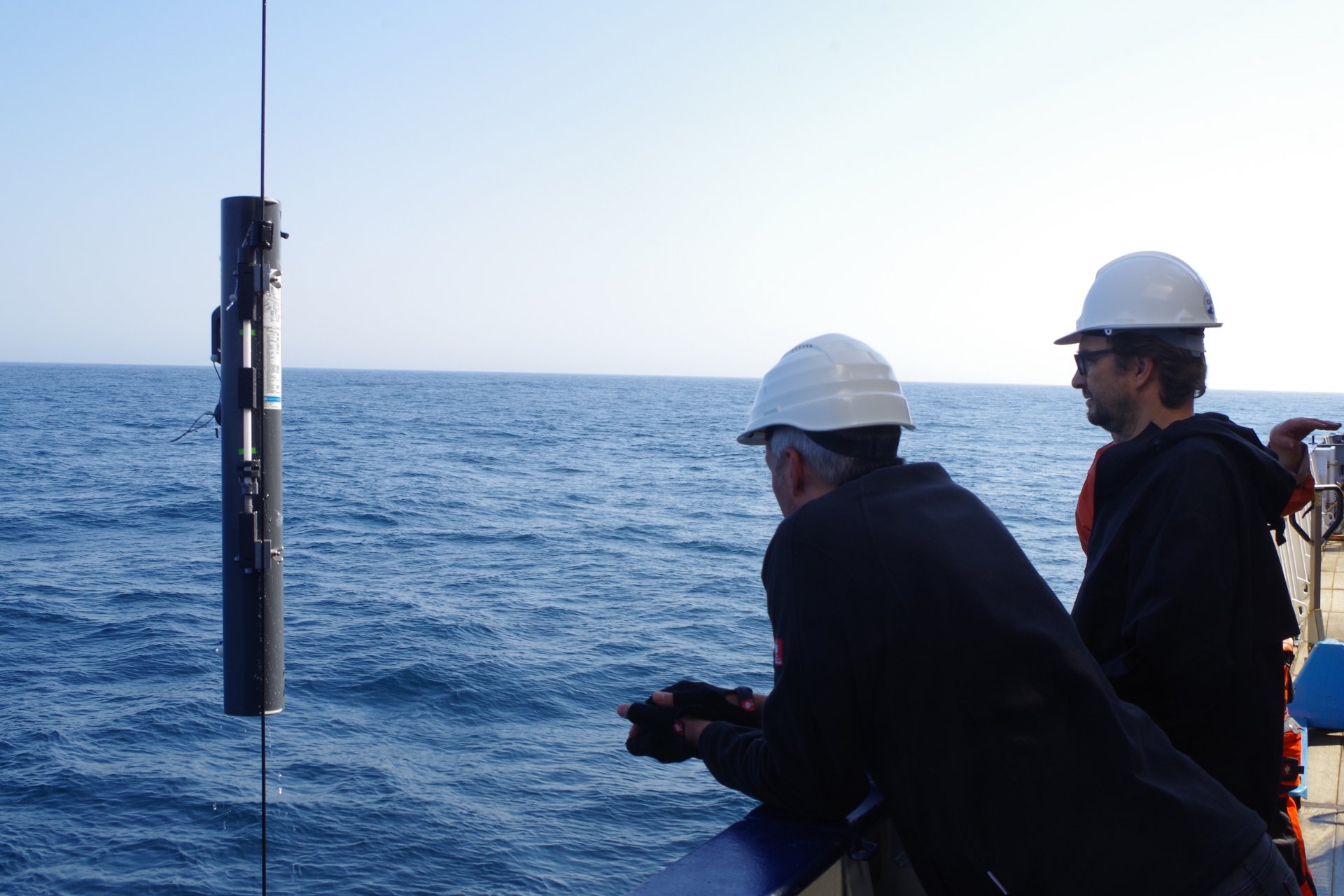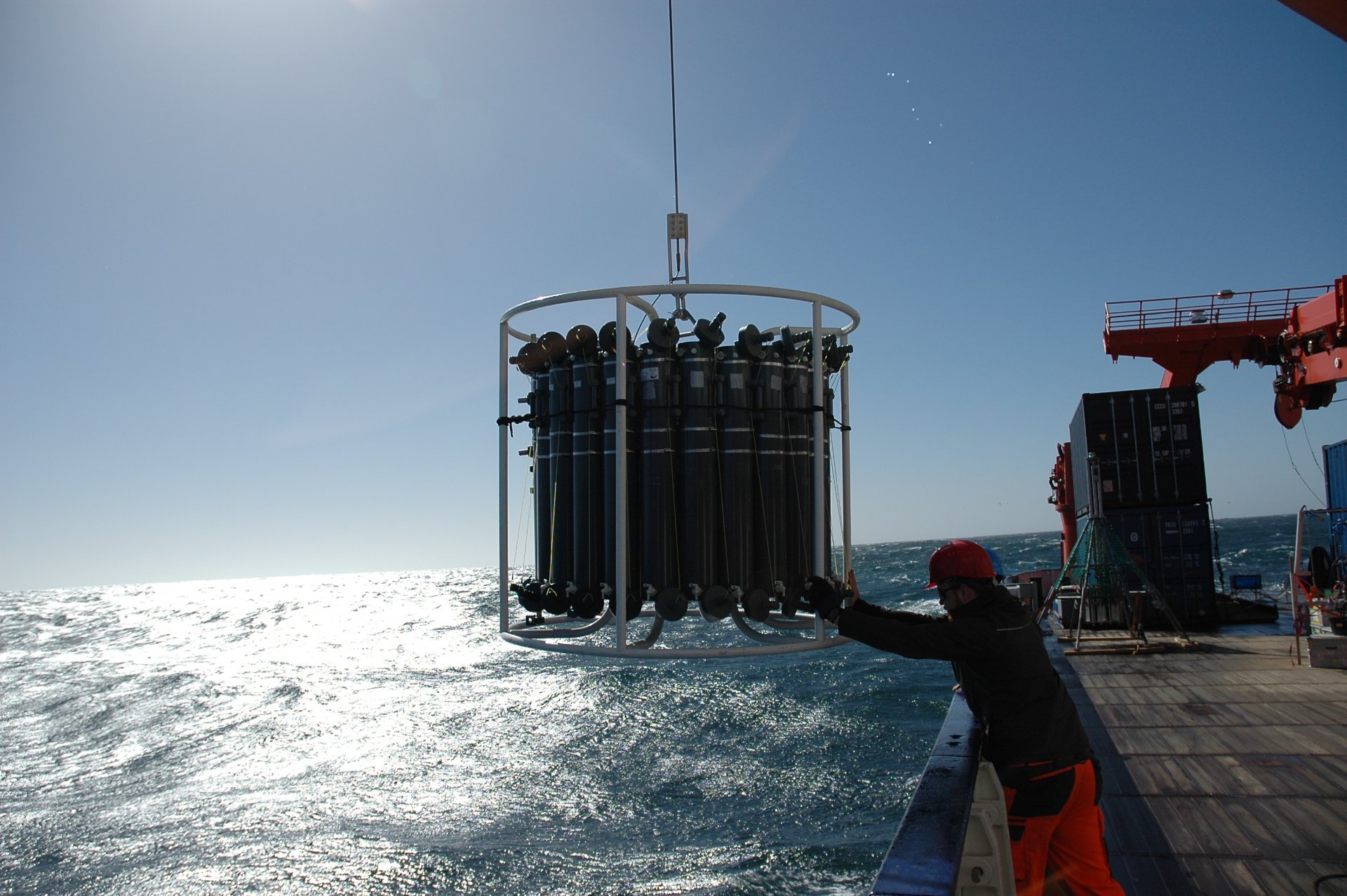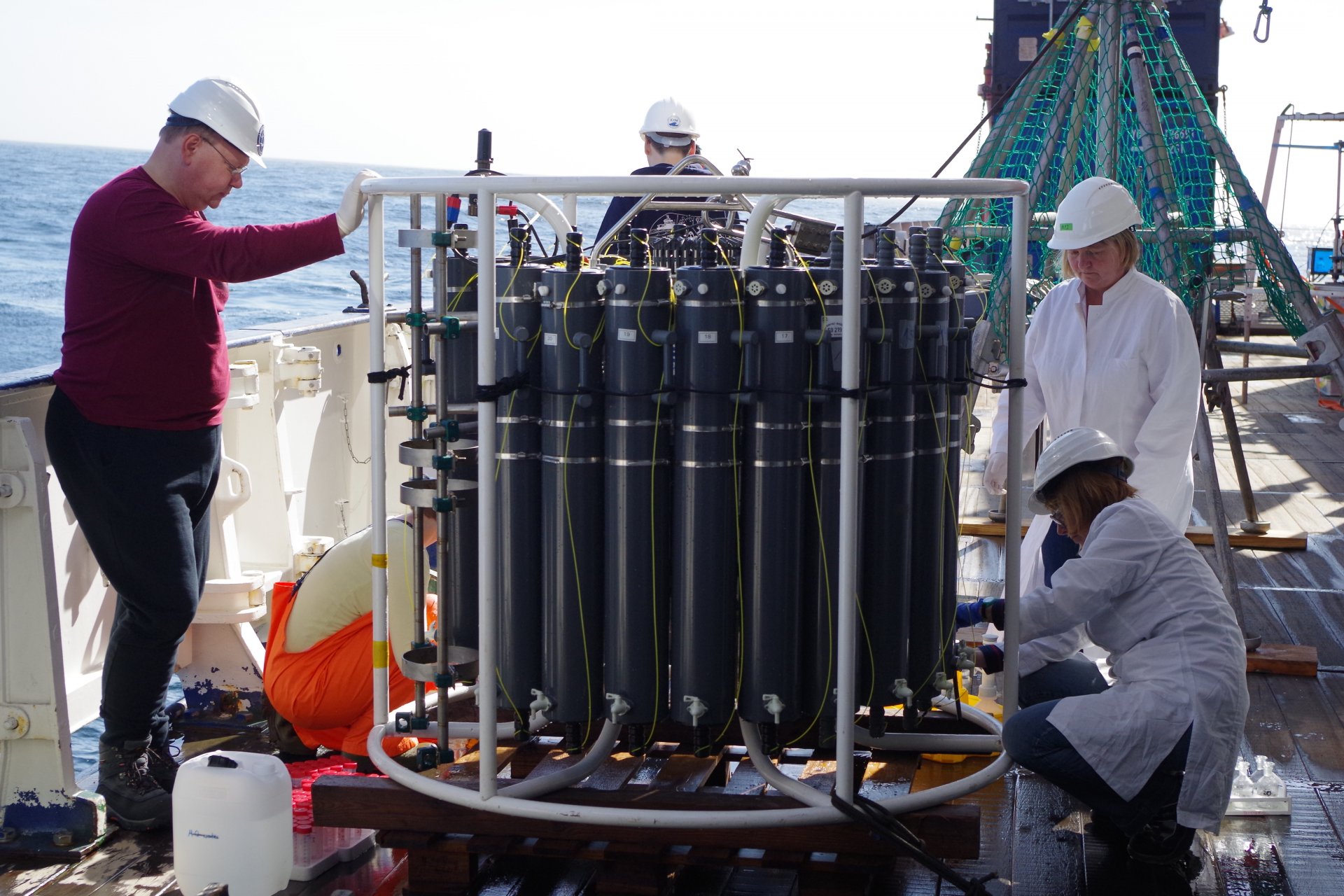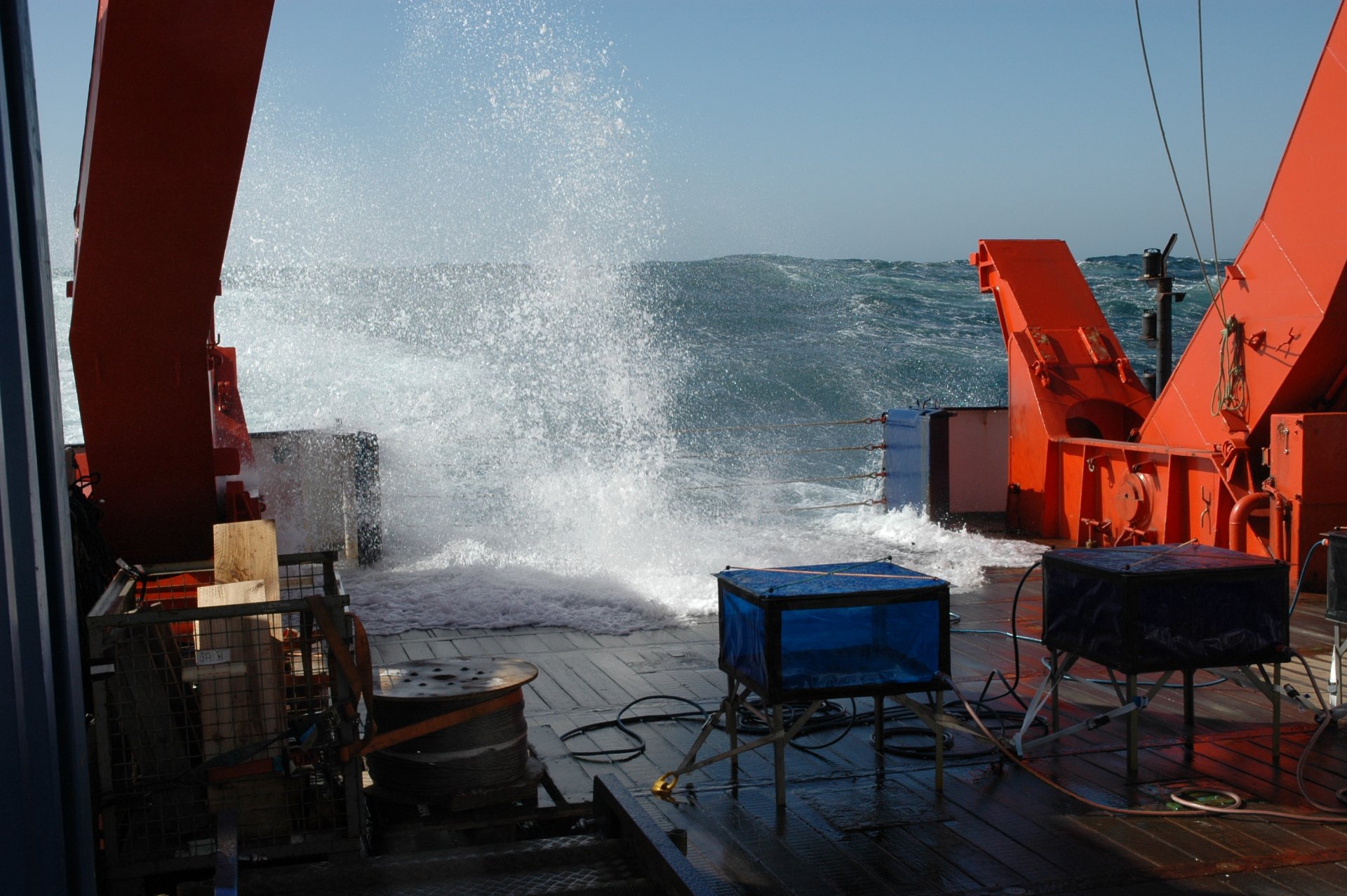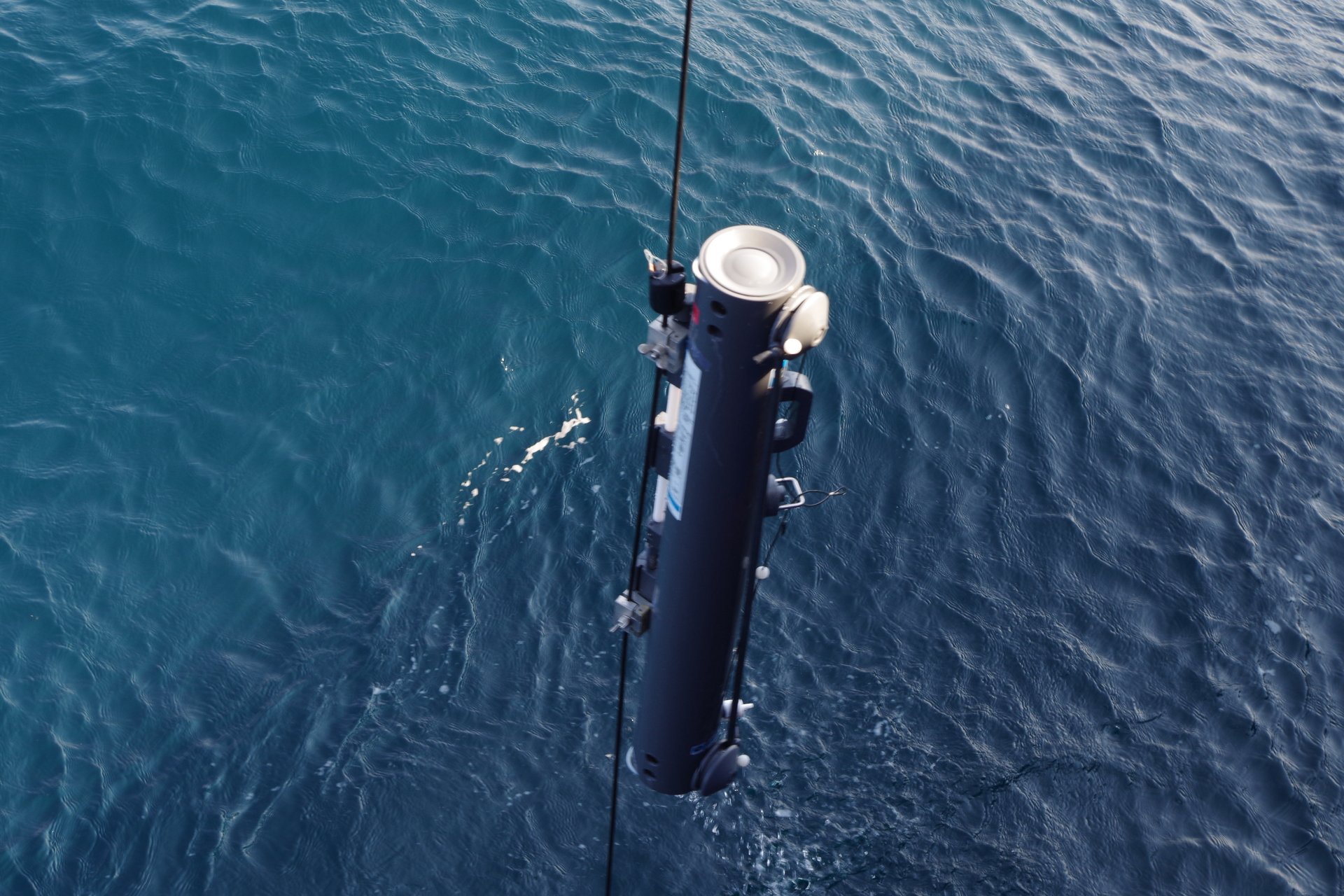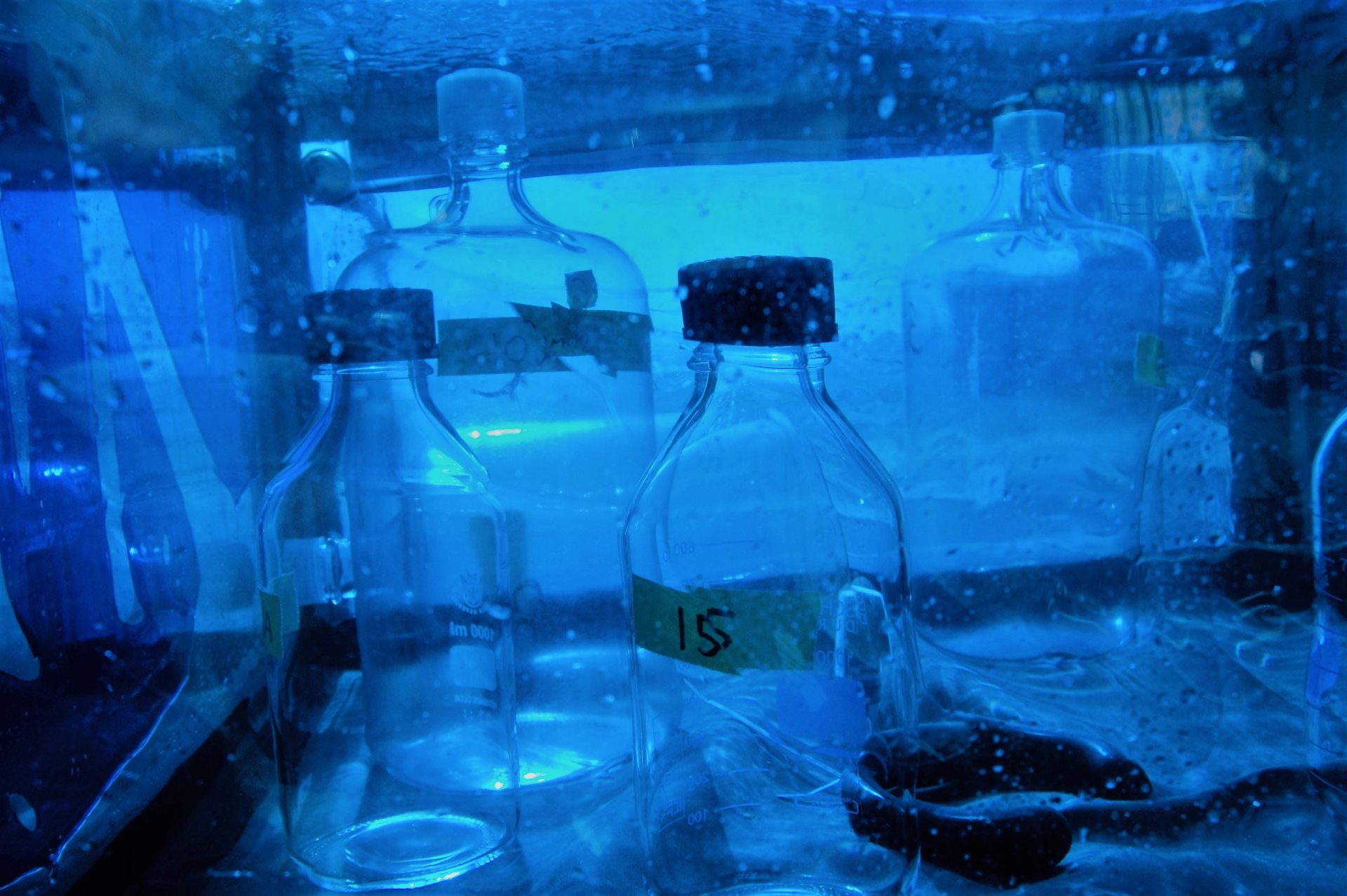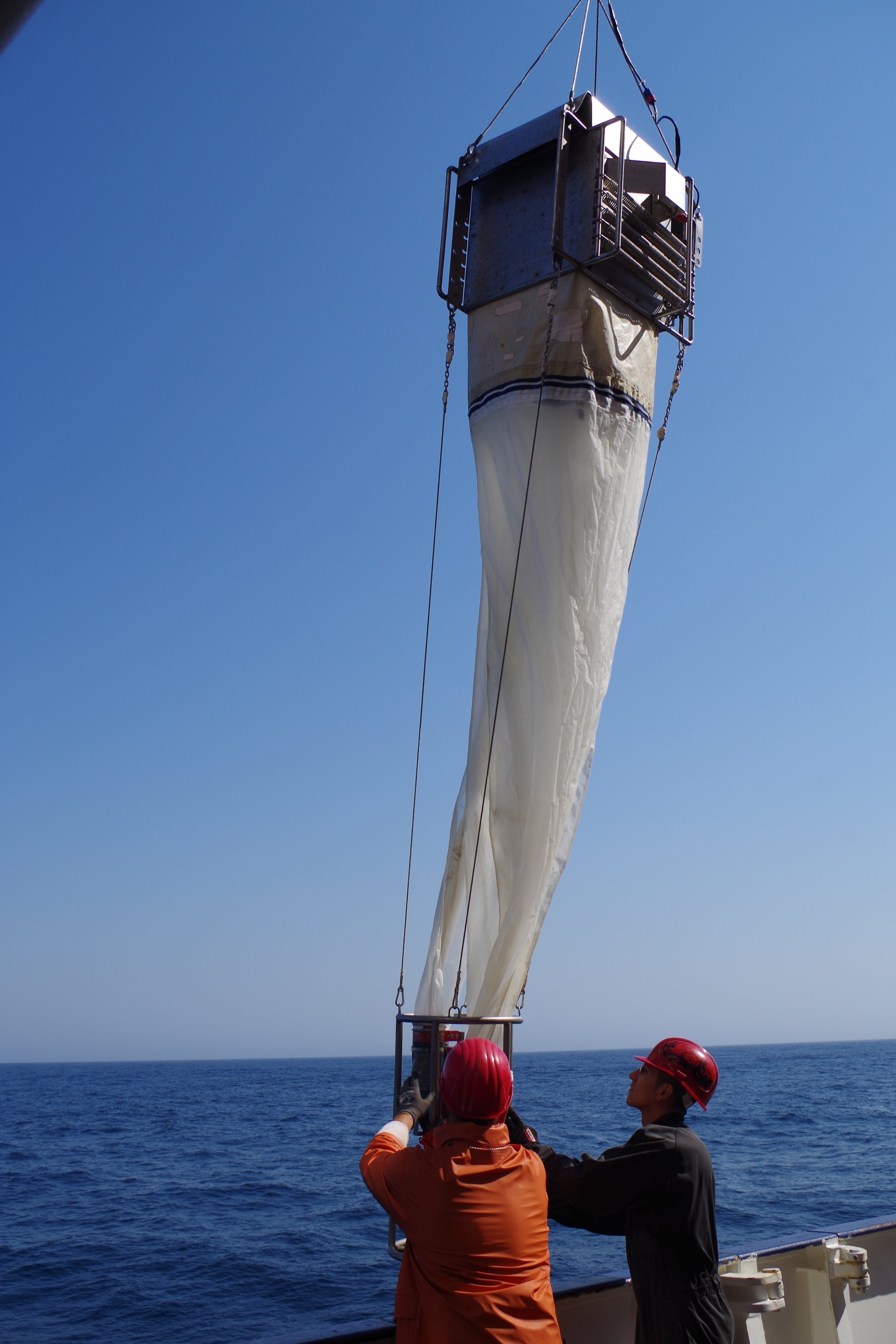- Press Office
- Blogs and More
- Meteor: 3. Weekly Report
Meteor: 3. Weekly Report
3. Weekly Report (July 9, 2018 - July 15, 2018)
Under the rain-heavy skies of the Intertropical Convergence Zone (ITCZ) theR/V Meteorskirts the coast of Western Africa on the transit north to Las Palmas. Cruising through the economicexclusive zones of countries such as Liberia and Sierra Leone sincelate Thursday morning, the underway data gathering systems andwater sampling systemshave been shut down, and the last station of this expedition also lies over two days behind us.
During our transit from the oxygen-minimum zone off Namibia into the open waters sampling began for the much more oligotrophic waters of the Eastern South and Equatorial Atlantic. These waters not only have low concentrations of nutrients such as nitrate, but are also low in trace elements. Standard sampling equipment often poses a source of contamination for trace elements, and special Teflon-coated Go-Flo bottles were used on the shelf as well the open waters to obtain very clean water samples for the analysis of dissolved and particulate trace elements, particularly iron (Fe)(Figure 1).
Fe can limit primary productivityin several oceanic regions, and the chemical phase and fluxes of Fe are not very well known in this so far under-sampled region. The samples obtained on this cruise will later be analyzed in the home laboratories of the Institute for Chemistry and Biology of the Marine Environment (ICBM) at the University of Oldenburg, where not only the chemical phase of the trace elements will be determined but also analysis will be carried out to distinguish sedimentary versus atmospheric sources of trace elements. Figure 1: Oxygen concentrations across the Kunene upwelling cell (18°S) (preliminary CTD data; leftpanel, V. Mohrholz) and Go-Flo deployment on station (right panel).
